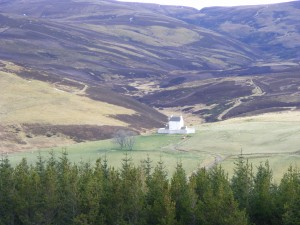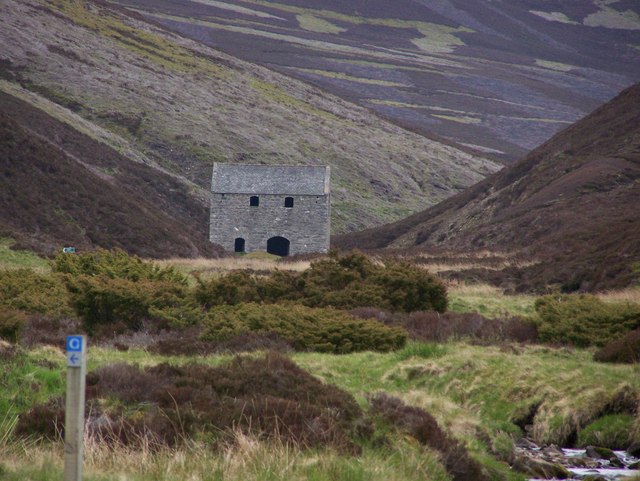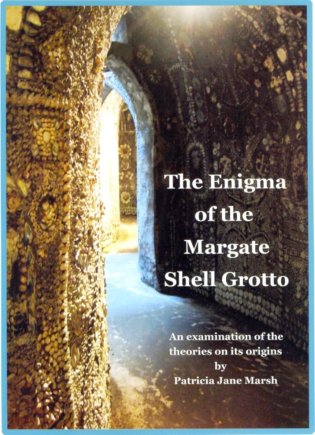Before we say goodbye to Christmas, I thought I’d (somewhat belatedly) share one of my favourite projects this year – researching the Christmas Truce of 1914. The resulting article was my most syndicated yet, and appeared in more than 15 different magazines, which I was very chuffed with!
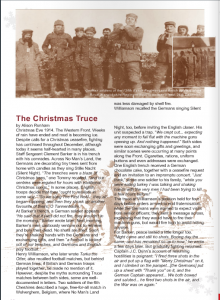 I particularly liked this layout used in Harpenden Now magazine, because I thought the image of soldiers used behind the text was very effective. The layout below is from The CM21 Connection, who seem to have bought the full length version rather than the edited one.
I particularly liked this layout used in Harpenden Now magazine, because I thought the image of soldiers used behind the text was very effective. The layout below is from The CM21 Connection, who seem to have bought the full length version rather than the edited one.
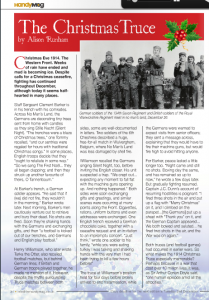
The Handy Mag designers used some charming Christmas imagery to illustrate the article, shown here on the left. I like the snowy background effect.
When researching the article I used many letter excerpts, including some from letters written by Henry Williamson – yes, the same man who went on to write Tarka the Otter, a book that made me cry when I first read it around age ten. If you would like to read letters from this period, I can heartily recommend the amazing Christmas Truce website, “borne out of research conducted by Alan Cleaver and Lesley Park in 1999 for a booklet on the Christmas Truce called ‘Plum Puddings For All'”. Alan and Lesley became “aware of the vast resource lying dormant in newspaper archives: original personal letters from participants describing what happened and the effect it had on them”. Alan, Lesley and other volunteers have since made it their task to seek out and transcribe these records, and it’s a stunning resource, so do visit.
Several magazines had obviously noticed the emphasis on personal letter excerpts and the mention of carols sung by both sides, and chose to to illustrate 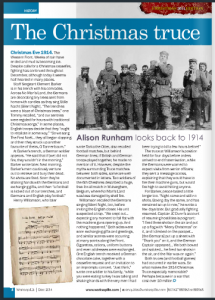 the article with letters or German music scores, as Community Spotlight did (see right). The photos used were very touching too and provide proof that it wasn’t all swept under the carpet; the Christmas Truce events were reported in the UK just days later, with letters and photos appearing in national newspapers. While there was some disapproval in the higher ranks, it wasn’t the national disgrace it’s sometimes made out to have been.
the article with letters or German music scores, as Community Spotlight did (see right). The photos used were very touching too and provide proof that it wasn’t all swept under the carpet; the Christmas Truce events were reported in the UK just days later, with letters and photos appearing in national newspapers. While there was some disapproval in the higher ranks, it wasn’t the national disgrace it’s sometimes made out to have been.
If the experiences of WW1 soldiers interests you then there are dozens of books to read, but some I’ve dipped into recently are The Soldier’s War and The Quick and the Dead by Richard Van Emden, and also Mud, Blood and Poppycock by Gordon Corrigan. Corrigan’s book raised a few hackles when published due to his determination to bust what he saw as some of the most troublesome and persistent WW1 myths.
If you would like to read my article, you can find it here on page 52 of the digital version of Yes magazine – if you’re interested in vision correction, my article on that is in the same magazine on page 36!
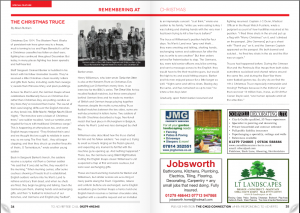

 His work was widely reproduced on the nose of war planes by military artists, with the most famous reproduction being the Memphis Belle.
His work was widely reproduced on the nose of war planes by military artists, with the most famous reproduction being the Memphis Belle.



